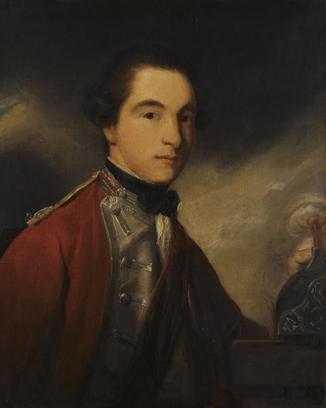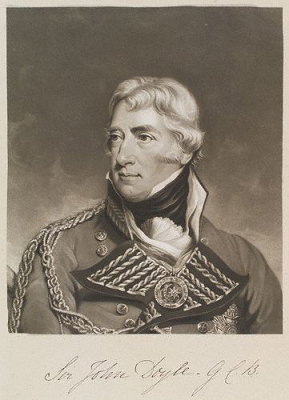|
18th Hussars
The 18th Royal Hussars (Queen Mary's Own) was a cavalry regiment of the British Army, first formed in 1759. It saw service for two centuries, including the First World War before being amalgamated with the 13th Hussars to form the 13th/18th Royal Hussars in 1922. History Early history The regiment was first raised by Charles, Marquess of Drogheda as the 19th Regiment of (Light) Dragoons in 1759; it was also known as Drogheda's Light Horse. It was renumbered the 18th Regiment of (Light) Dragoons in 1763, and briefly the 4th Regiment of Light Dragoons in 1766 before reverting to the 18th in 1769. Arthur Wellesley was briefly a junior officer in the regiment between October 1792 and April 1793. The regiment undertook a one-year tour in Saint-Domingue between February 1796 and February 1797. It was in action at the Battle of Bergen in September 1799 during the Anglo-Russian invasion of Holland.Malet, p. 16 In 1805 it took the title of the 18th (King's Irish) Regiment of (Light) Dr ... [...More Info...] [...Related Items...] OR: [Wikipedia] [Google] [Baidu] |
Field Marshal
Field marshal (or field-marshal, abbreviated as FM) is the most senior military rank, ordinarily senior to the general officer ranks. Usually, it is the highest rank in an army and as such few persons are appointed to it. It is considered as a five-star rank (OF-10) in modern-day armed forces in many countries. Promotion to the rank of field marshal in many countries historically required extraordinary military achievement by a general (a wartime victory). However, the rank has also been used as a divisional command rank and also as a brigade command rank. Examples of the different uses of the rank include Austria-Hungary, Pakistan, Prussia/Germany, India and Sri Lanka for an extraordinary achievement; Spain and Mexico for a divisional command ( es, link=no, mariscal de campo); and France, Portugal and Brazil for a brigade command (french: link=no, maréchal de camp, pt, marechal de campo). Origins The origin of the term dates to the early Middle Ages, originally meaning ... [...More Info...] [...Related Items...] OR: [Wikipedia] [Google] [Baidu] |
Battle Of Benavente
The Battle of Benavente (29 December 1808) was a cavalry clash in which the British cavalry of Lord Paget defeated the elite ''Chasseurs à cheval'' of the French Imperial Guard during the Corunna Campaign of the Peninsular War. The French chasseurs were broken and forced into the River Esla; their commanding officer, General Lefebvre-Desnouettes, was captured. The action was the first major incident in the British army's harrowing retreat to the coast and ultimate evacuation by sea. Background The Corunna campaign started with the Battle of Cardedeu. Sir John Moore led a British army into the heart of northwestern Spain with the aim of aiding the Spanish in their struggle against the French occupation. However, Napoleon had entered Spain at the head of a large army in order to retrieve French fortunes. This, together with the fall of Madrid to the French, made the position of the British army untenable. The British army had begun their retreat and were being pursued by ... [...More Info...] [...Related Items...] OR: [Wikipedia] [Google] [Baidu] |
12th Royal Lancers
The 12th (Prince of Wales's) Royal Lancers was a cavalry regiment of the British Army first formed in 1715. It saw service for three centuries, including the First World War and the Second World War. The regiment survived the immediate post-war reduction in forces, but was slated for reduction in the 1957 Defence White Paper, and was amalgamated with the 9th Queen's Royal Lancers to form the 9th/12th Royal Lancers (Prince of Wales's) in 1960. History Early wars The regiment of dragoons was raised in Reading by Brigadier-General Phineas Bowles as the Phineas Bowles's Regiment of Dragoons in July 1715 as part of the response to the Jacobite rebellion. It was employed escorting prisoners to London later in the year. In 1718, the regiment was placed on the Irish establishment and posted to Ireland, where it remained for 75 years. In 1751, the regiment was officially styled the 12th Dragoons. In 1768, King George III bestowed the badge of the three ostrich feathers and the motto ... [...More Info...] [...Related Items...] OR: [Wikipedia] [Google] [Baidu] |



